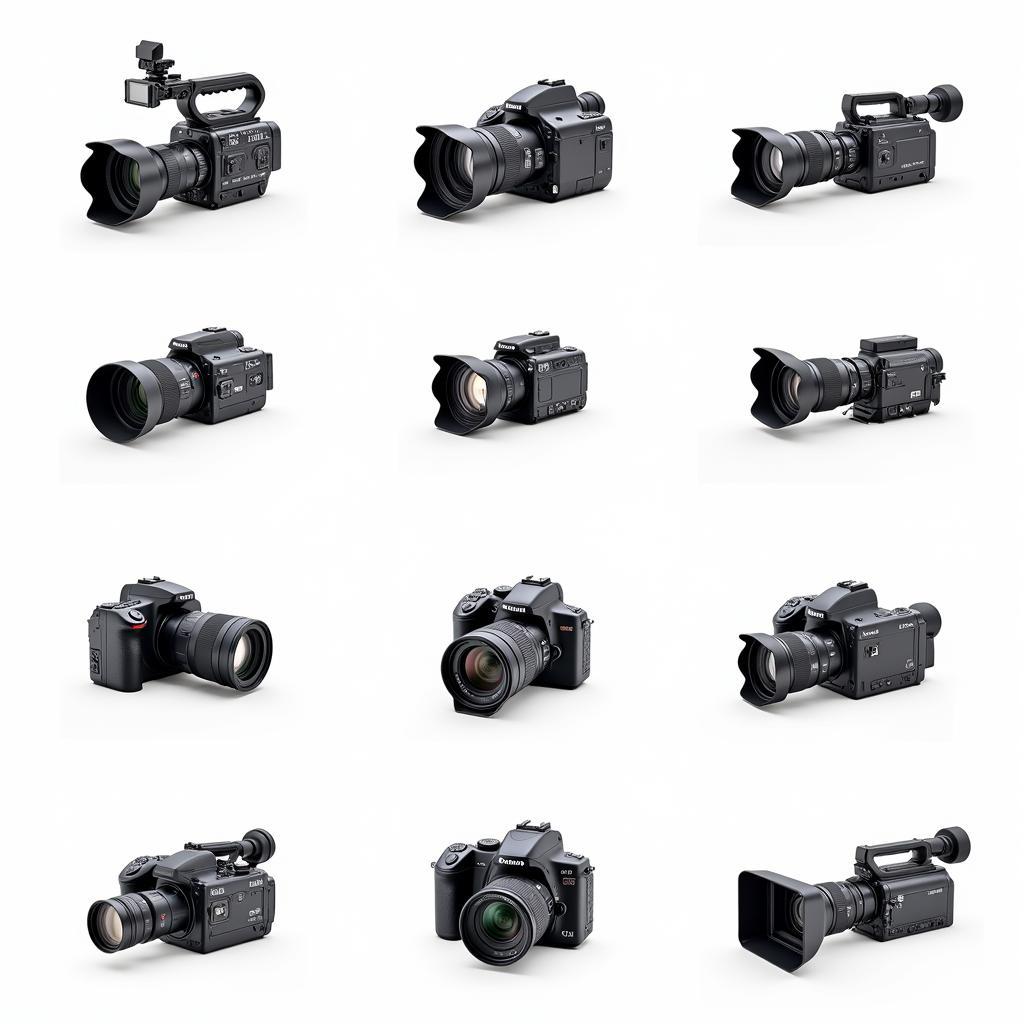A lathe machine, also known as a turning machine, is a fundamental tool in manufacturing and machining processes. It’s used to shape and cut a variety of materials, including metal, wood, and plastic, by rotating the workpiece against a cutting tool.
What is a Lathe Machine?
At its core, a lathe machine consists of a bed, headstock, tailstock, and carriage. The bed provides a stable base for the other components, while the headstock houses the spindle, which rotates the workpiece. The tailstock supports the workpiece on the opposite end, and the carriage holds and moves the cutting tool.
Types of Lathe Machines
There are numerous types of lathe machines, each designed for specific applications and materials:
- Engine Lathe: The most common type, versatile for various operations.
- Turret Lathe: Features a multi-tool turret for efficient mass production.
- CNC Lathe: Computer-controlled for high precision and complex shapes.
- Speed Lathe: Designed for woodworking, offering high spindle speeds.
- Toolroom Lathe: Highly accurate for creating tools and dies.
Parts of a Lathe Machine
Understanding the key parts of a lathe machine is crucial for safe and effective operation:
- Bed: The foundation of the lathe, providing stability and alignment.
- Headstock: Houses the spindle, motor, and speed control mechanisms.
- Tailstock: Supports the workpiece and can hold drilling or boring tools.
- Carriage: Moves the cutting tool along the workpiece, controlling the cut.
- Cross Slide: Allows for radial movement of the cutting tool.
- Tool Post: Holds the cutting tool securely.
- Chuck: Clamps the workpiece securely to the spindle.
Lathe Machine Operations
Lathe machines are capable of performing a wide range of operations, including:
- Turning: Reducing the diameter of the workpiece to a desired size.
- Facing: Creating a flat surface on the end of the workpiece.
- Boring: Enlarging an existing hole or creating a precise internal diameter.
- Drilling: Creating holes in the workpiece using a drill bit held in the tailstock.
- Threading: Cutting threads on internal or external surfaces of the workpiece.
- Knurling: Creating a textured surface for grip or decoration.
Advantages of Using a Lathe Machine
Lathe machines offer numerous advantages in manufacturing:
- High Precision: Capable of producing highly accurate and repeatable parts.
- Versatility: Can perform a wide range of operations on various materials.
- Efficiency: Enables high production rates, especially with automated systems.
- Cost-Effectiveness: Reduces material waste and labor costs.
- Smooth Finish: Creates surfaces with excellent surface finish.
Applications of Lathe Machines
Lathe machines are essential tools in various industries, including:
- Manufacturing: Creating components for automobiles, aerospace, and machinery.
- Metalworking: Shaping and cutting metal parts for various applications.
- Woodworking: Producing furniture legs, bowls, and other cylindrical objects.
- Jewelry Making: Creating intricate designs and shapes in jewelry pieces.
- Education and Prototyping: Used in educational institutions and workshops for learning and developing prototypes.
Conclusion
Lathe machines remain a cornerstone of manufacturing and machining processes, offering precision, versatility, and efficiency in shaping a wide range of materials. From basic engine lathes to advanced CNC machines, their impact on various industries is undeniable. Understanding the different types, parts, operations, and applications of lathe machines is crucial for leveraging their full potential in any manufacturing environment.
FAQs
1. What is the difference between a lathe machine and a milling machine?
A lathe machine rotates the workpiece against a stationary cutting tool, while a milling machine rotates a cutting tool against a stationary workpiece. Lathes are ideal for cylindrical shapes, while milling machines excel at creating complex 3D shapes.
2. What materials can be machined on a lathe?
Lathe machines can machine a variety of materials, including metals (steel, aluminum, brass), plastics, wood, and even some composites. The specific material that can be machined depends on the lathe’s capabilities and the cutting tools used.
3. What are the safety precautions for operating a lathe machine?
Safety is paramount when operating a lathe machine. Always wear appropriate safety glasses, gloves, and hearing protection. Ensure the workpiece is securely clamped, and never leave the machine unattended while it’s running.
Need Help?
For any assistance with your lathe machine needs, contact us at:
Phone: 0373298888
Email: [email protected]
Address: 86 Cầu Giấy, Hà Nội.
Our dedicated customer support team is available 24/7 to assist you.


